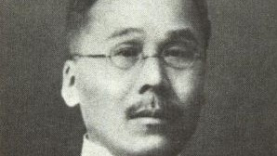
Tomokichi Fukurai (1869-1952) pioneered experimental psychology in Japan. He also carried out research in hypnosis and ESP and is noted in particular for experiments in ‘thoughtography’.
Early Career
Tomokichi Fukurai was born in Takayama City, Gifu Prefecture. He studied philosophy at Tokyo Imperial University’s College of Letters. In 1905 he published the first systematic study of mesmerism in Japan, Saimin shinrigaku gairon (An introduction to mesmeric psychology). He specialized in abnormal psychology and hypnotic states, receiving his PhD in 1906 for research on mesmerism. He then worked as a lecturer at the Tokyo Imperial University becoming assistant professor in 1908.
Psychical Research
In 1910 Fukurai discovered a young woman, Mifune Chizuko, who appeared able to psychically describe images hidden in a box or envelope. Chizuko killed herself the following year; however, Fukurai was able to continue similar experiments with another sensitive, Ikuko Nagao. He found that Nagao could also telepathically imprint images on photographic plates, an ability which he named nensha1 and which in the West came to be called ‘thoughtography’. In 1911 controversy broke out concerning the legitimacy of his experimental procedures, amid opposition to his activities on the part of other scientists and academics. Nagao discontinued the sessions and died soon after.
Opposition intensified in 1913 when Fukurai published his work in his book Toushi to nensa (Clairvoyance and Thoughtography). This was published in English in 1931.2 The media controversy embarrassed the university authorities and Fukurai was effectively dismissed.3 He wrote:
After the publication of this book I was disliked more and more by scientists in Japan. So much pressure was put upon me, and so difficult was it to continue my psychical research and keep my position as a professor at the Imperial University of Tokyo, that I was obliged to resign at last.4
Later Career
Fukurai was the principal of Senshin Women’s High School between 1921 and 1926. He was then appointed a professor at Koyasan College in Wakayama, where he researched esoteric Buddhism. He travelled to London in 1928 and lectured on his early experiments at the third meeting of the International Spiritualists’ Federation. He also attended two sittings with the Crewe circle, where the controversial spirit photographer William Hope was producing photographs he claimed were of deceased spirits.5
In 1946 Fukurai established the Tohoku Psychical Research Society. Following his death from pneumonia in 1952, the Fukurai Memorial Museum was opened in 1956.
Legacy
The scandal that led to Fukurai’s dismissal in 1913 is said to have been ‘a major deterrent in the advancement of clinical psychology in Japan during the first half of the 20th century’.6 His psi studies received limited acknowledgement in Western parapsychology: Helen Salter, in a review of his book, noted the ‘striking’ nature of his findings but considered the precautions against fraud to have been inadequate.7 However, interest in his ‘thoughtography’ experiments revived with the research carried out in the 1960s with Ted Serios, who demonstrated an ability to make mental images appear on Polaroid film.
Selected Publications
Saimin shinrigaku gairon (1905). Tokyo: Seibido.
Toshi to nensha (1913). Tokyo: Hobunkan.
Proeven van Gedachte-Grafie met Japanische Mediums (1929). Amsterdam, the Netherlands: C.A. Spin & Zoon.
Clairvoyance and Thoughtography (1931). London: Rider. [English edition of Toushi to nensha.]
Shinrei to shimpi sekai (1932). Kyoto: Jimbun Shoin.
Melvyn Willin
Literature
Fukurai, T. (1931). Clairvoyance and Thoughtography. London: Rider.
Permutt, C. (1983). Beyond the Spectrum: A Survey of Supernormal Photography. Cambridge, UK: Patrick Stephens Ltd.
Salter, H. de G. (1931). Review: Clairvoyance and Thoughtography by T. Fukurai. Journal of the Society for Psychical Research 27, 87-88.
The Senrigan Affair and its Time Period. [Web page]
Takasuna, M. (2012). The Fukurai affair. History of the Human Sciences 25/2, 149-64.

